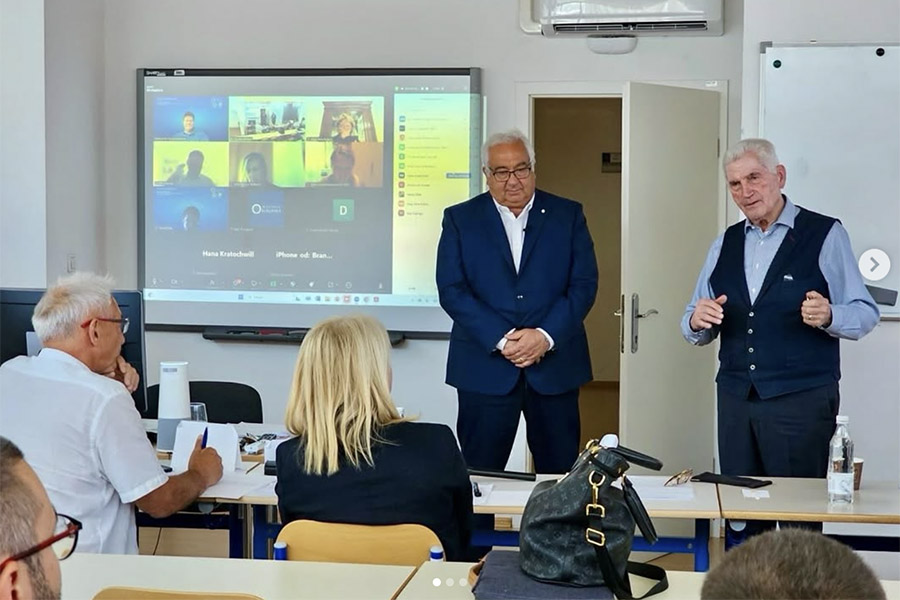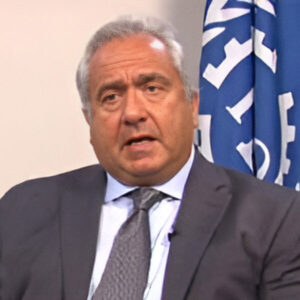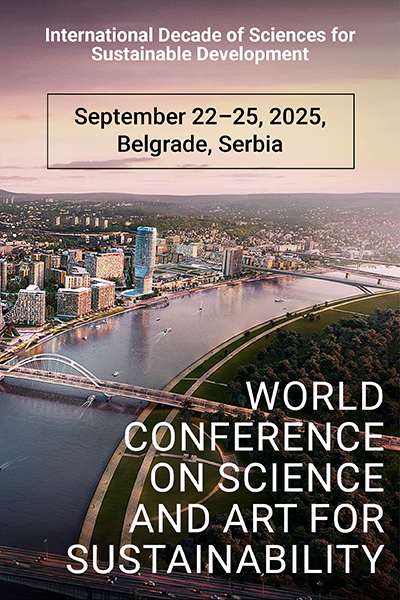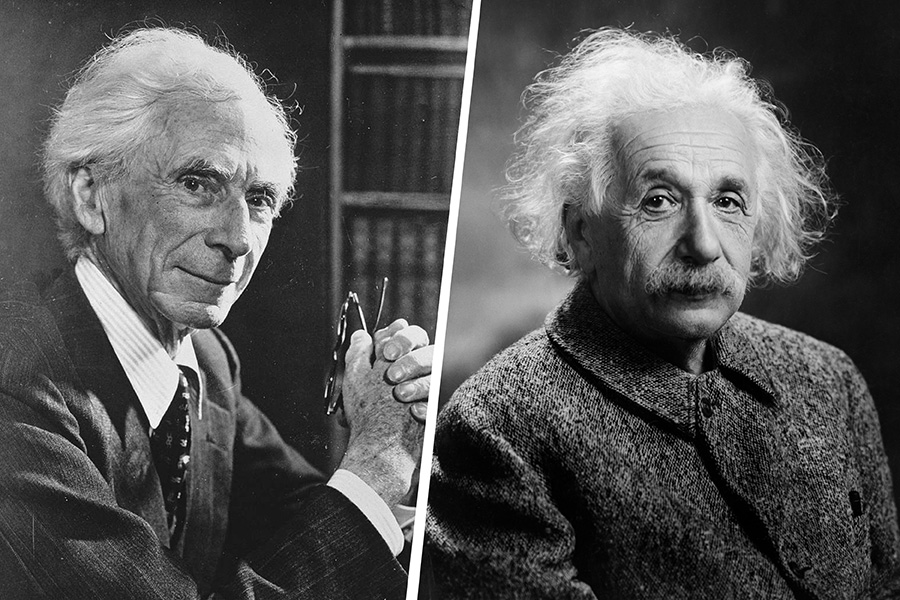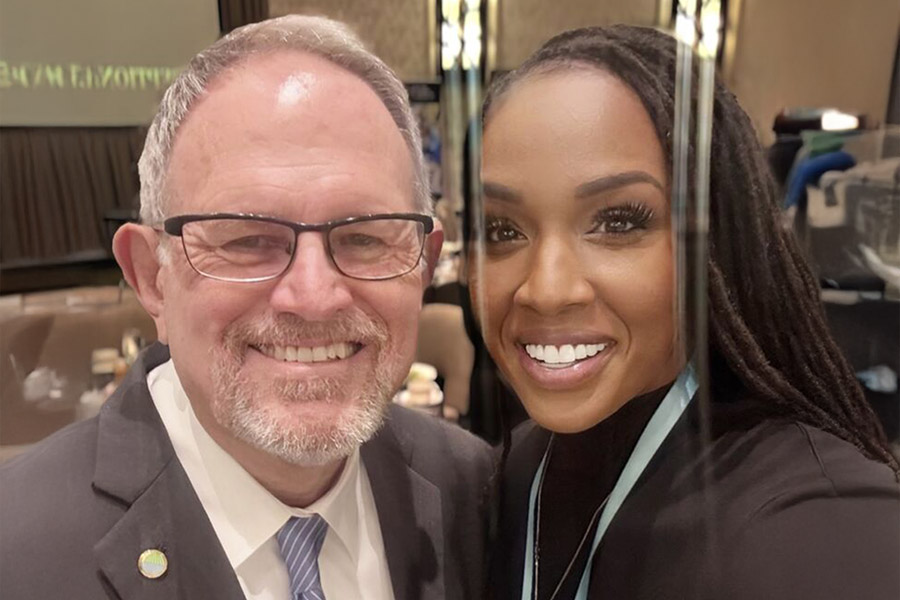On March 14, 2025, WAAS Vice President (Social Sciences and Humanity) Donato Kiniger Passigli, addressed the 13th Annual Conference of Europe’s Sciences and Arts Leaders under the conference theme “It’s About People 2025.” The event took place in Maribor, Slovenia and the following is the speech presented by Kiniger Passigli:
Esteemed colleagues and respected members of the academic community,
This is a call for action! We stand at a critical juncture in our shared history, where escalating political polarization, violence, and a marked disregard for universal human dignity challenge the very fabric of international relations. This present climate necessitates not only a re-evaluation of our strategies for conflict prevention and resolution but also underscores the unique positioning of the academic community to lead in this essential endeavour.
The urgency of this call is amplified by the scale of current global crises. Millions are refugees, displaced and in need of assistance. International institutions deputed to deliver that much needed humanitarian aid or health care, questioned for their efficiency or impartiality, are put out of business or will survive with budgets and operational mandates drastically reduced. The multilateral system and the international community are clearly paralyzed, and human rights principles are ignored by the most powerful. In a diffused power landscape, global diplomacy increasingly relies on diverse actors shaping international relations and policy.
We are entering unchartered waters, and the international system is very fragmented. The escalating geopolitical tensions—point to a systemic failure of existing peace-making and peacebuilding mechanisms and the critical need for innovative solutions based on human relations and the power of people.
Indeed, there are certain things that only governments can do: negotiating binding agreements; but there are other things only citizens can do: change human relations. This observation by Harold Saunders, a master of shuttle diplomacy instrumental in the Camp David Accords, underscores the pivotal role of social dynamics in achieving non-violent conflict resolution, fostering positive peace. The inherent connection between human security, in all its multifaceted dimensions, and core societal values is undeniable.
The term human security is the product of a correlation between human on one hand (meaning individuals, people) and security (meaning basic needs, opportunities, health and equity). But this syllogism also indicates that in its absence there is fear, growing insecurity, an enemy that no wall can contain. The fear of the unknown: of a virus, of drought, hunger, poverty, hazards, effects of globalization, technology, existential threats like nuclear weapons or climate change, intended and unintended consequences of war, in so many places.
Today’s global conflict landscape is increasingly complex, shaped by non-state actors like NGOs, multinational corporations, private military and security companies, and terrorist organizations active in all fields, including our ecosystem and the cyberspace. Their influence complicates the strategic environment, demanding comprehensive analysis and tailored conflict resolution strategies.
The current multipolar world features power centres beyond traditional states—corporations and oligarchs, including tech giants—challenging established geopolitical strategies. Traditional peacebuilding approaches, often relying on oversimplified societal views, are insufficient. Sustainable peace requires collective efforts; peace must be cultivated organically, focusing on societal contexts, and avoiding the illusion that external interventions (firefighters brigades spraying dust) can instantly create peace.
This inadequacy of current approaches stems, in part, from the perils of misperception, which consistently undermine peace efforts. Misunderstandings about intentions and perceptions of reality frequently lead to serious errors, especially among opponents with different cultural values. And history is full of illustrious examples of how misjudgements lead to devastating consequences. Some examples:
The Iranian Revolution of 1979, when western powers misread the nature of the uprising, failing to recognize the deep-seated grievances of the Iranian people. This misjudgement resulted in significant and lasting geopolitical repercussions.
The disastrous consequences of the 2003 US invasion of Iraq, based on an inaccurate assessment of Saddam Hussein’s weapons of mass destruction capabilities. Whether intentional or not, the conflict continues to reverberate through global affairs to this day.
The tragic failures of the UN in the former Yugoslavia, in the early 90s, which ultimately paved the way for NATO’s bombing and peace enforcement under its flag, exemplifies further the perils of misconceptions and dubious mandates.
Somalia, Rwanda, Libya and even Syria are other examples of misread, misinterpreted signals that resulted in tragic downturns and failed expeditions by the international community.
Presently, the existing geopolitical landscape is fraught with tension. In Europe, heightened tensions are due to the ongoing war in Ukraine but also to military buildup straining US-European relations over NATO spending and troops deployment; there are ethnic tensions in the Balkans (particularly in Kosovo, with over 400 recent incidents reported); military activity in the Black Sea threatening regional stability; ongoing tensions in Georgia related to its post electoral issues with Russia; and tension under the ashes between Armenia and Azerbaijan in Nagorno-Karabakh. All of them contribute to a climate of instability and underscore the urgent need for conflict prevention strategies, tension reduction and confidence building measures.
The persistent elusiveness of peace should not justify inaction or a neglect of urgent human security challenges. The current crises—born from tensions simmering over two decades—underline the inadequacies of traditional political approaches to sustaining peace, exacerbated by political polarization. Recognizing that each party’s perceptions create distinct realities is essential. Failing to account for these differing perspectives leads to misjudging the strategic environment and results in misguided efforts.
A deep understanding of local, national, international contexts is essential for successful peacebuilding. The roots of conflict are complex, often bound up with inequalities, grievances, inter-group tensions, ethnic disparities, and poverty. Addressing these issues demands rigorous academic research and informed dialogue among all stakeholders.
It is with this understanding that I now wish to turn attention to the central focus of my presentation: the new Global Peace Offensive. An initiative that is moving its first steps quite rapidly: less than a year ago I revisited the original Peace Offensive of the 60s devised by Charles Osgood that inspired the major breakthroughs of Kennedy during the Cuban missile crisis and, much later, the Camp David Accords brokered by President Carter. I presented a proposal to the General Assembly of the World Academy of Art and Science, which subsequently adopted the Global Peace Offensive principles, paving the way for a renewed commitment to peace efforts.
Later, the initiative was endorsed by the Black Sea University Network – BSUN at the rectors’ level and, last October, the European Academy of Science and Art (EASA) and the World Academy of Art and Science (WAAS) issued a joint vision statement to support the Global Peace Offensive. A common agenda is now being devised with the Club of Rome. In the meantime, the proposal has been presented to the summit of the Geneva Science and Diplomacy Anticipator (with prospects to develop a joint curriculum) and to the Global Peace Education Network in Paris.
The Global Peace Offensive is intrinsically a proactive methodology fostering dialogue and promoting peace within civil society. This effort will be led by scholars and researchers to leverage technological innovations, identify emerging trends, and anticipate developments influencing conflict dynamics. The approach is crucial for developing effective conflict prevention strategies and promoting peace education. It is essential to use a multidisciplinary methodology as tensions derive from a multiplicity of factors, causes and effects that could be represented by an epidemic outburst, migratory patterns, corruption, infrastructure deficits, extreme violence, climate change. This requires contributions from different expertise with one single humanist entry point.
The initiative intends to strongly promote cross-cultural understanding, particularly among younger generations, to cultivate peaceful coexistence—a crucial step toward lasting peace. We aim to identify, create, and project peacebuilding opportunities, facilitate dialogue among conflicting parties, and improve analysis, decision making and narratives through innovative conflict resolution strategies.
Furthermore, central to the Peace Offensive is the understanding that sustainable peace cannot be imposed from the outside. Rather, it arises from within communities taking ownership of the peace process. Ultimately, solutions that are not truly shared by the local communities are not likely to be taken up and succeed. Therefore, we are committed to developing and implementing innovative educational programs, also utilizing the potential of artificial intelligence, to provide communities with the tools and knowledge they need to actively pursue and define their own vision of peace.
Advancing literacy, science, and education can help bridge divides and orient people in the vast information landscape. AI can enhance dialogue and help predict and avert crises through analysis of trends and collaborative interventions.
Developed as a collaboration with the WAAS and the EASA, our Global Peace Offensive embarks on a three-pronged / three pillars strategy designed to deliver sustainable solutions:
- Localized, Strategic, De-escalation: This is confidence building at the grassroots level with people- to-people initiatives and a problem-solving approach. We advocate for localized initiatives that employ cultural, scientific, economic, educational, and environmental diplomacy. The academic community is well positioned to investigate and understand what the drivers of peace at the local community level are; which are the spoilers and inhibitors of peace; what are the elements that encourage local consent and legitimacy according to local and international norms. Local identities, traditions religions are all factors that determine positive peace as eventually the resumption of conflict.
- Ownership and Trust-Building: Essential to lasting peace is prioritizing the voices of all stakeholders, assessing their needs, and promoting cultural exchanges. Through collaborative partnerships, we can enhance cooperation towards achieving human security and the Sustainable Development Goals. This entails bottom-up rather than merely top-down empowerment. It is more than just participation of local institutions and socio-economic actors and constituents. representation. It is the meso-level that can generate mutual support, empathy and the ability to transform reality. Forging relations through business, trade, and the arts belongs here. Like novel Marco Polo, we need to give new impetus to discoveries that bring people together.
- Enhanced Dialogue: Using diplomacy, education, and technology (including artificial intelligence) to influence political decisions and peace efforts. Innovation plays a critical role for long-term solutions. Achieving lasting peace necessitates iterative processes of dialogue, employing diverse diplomatic approaches (cultural, scientific, educational, and traditional). We will pursue incremental, sustainable solutions by engaging political, economic, and media systems, addressing root causes of conflict. AI and social networks will enhance educational programs, informing policy and promoting peace discourse, while carefully considering ethical implications and technological limitations. The “do no harm” principle needs to be observers at all levels of this pillar of activities that span across the local, national, regional and international level. This is the area of peace-centred education.
These three pillars or parallel tracks correspond to three baskets of activities that can take place simultaneously or at different intervals according to the specific context in which we will operate, capacities and effective participation. One does not exclude the other one as actually thy reinforce one another. In our diagnostics, we should look at context specific entry points and the long-term evolution of crises (Tolstoy in War and Peace wrote that time and patience are the best warriors).
Our initiative enhances hybrid peace processes by combining traditional diplomatic methods with public dialogue, innovative technology, and science diplomacy to foster local consent and adhere to international standards. As an example, in Timor Leste in 2008, addressing youth grievances rather than just immediate security issues effectively reduced gang violence.
Successful hybrid peace processes require integrating local and international considerations. In Cyprus, peace efforts involve not only ethnic reconciliation and EU integration but also institutional reform, economic opportunities, and re-evaluating boundaries and sovereignty due to entrenched communal identities. Similarly, peace in the Middle East extends beyond the two-state solution, encompassing cross-territory reconciliation and potential economic cooperation.
Local peace benefits also heavily rely on addressing historical grievances within the framework of customary rules, identities, rights, dignity, aspirations, and international norms.
In my mind, we should avoid two fundamental mistakes which often mislead us in our efforts to comprehend the evolution of many political, economic, societal, environmental and security crisis: one being the oversimplification of the analysis that relies on predetermined theories of change with variables hardly accounted for; the second being the underestimation of the human component and its complex nature that cannot be explored merely in terms of parameters such as wealth, economic growth or ideological affiliation.
A problem-focused and context specific approach is a better lens for our investigation.
As agents of peace, we should increasingly concentrate on the positive side of the story. Even in the darkest pictures of the most intractable conflicts there is a dim light somewhere. That is the objective in sight. It’s not unusual that a positive discourse or project between rival communities or even governments can help overcoming stalled peace processes or remove negotiations’ deadlocks. Media systems can support in this endeavour.
The Peace Offensive paradigm has the potential to help strengthen confidence building by prioritizing prevention and supporting ongoing peace-building interventions.
In sum, what are the benefits of our approach? Cultural and science diplomacy bring significant benefits to our global community, especially through peace-centred education. By building public perception and engagement, we can strengthen viable science diplomacy solutions. The academic role is crucial in promoting mutual respect for diverse perspectives and scientific expertise, along with public outreach to educate communities on the values of international cooperation and multilateralism. Engaging the public effectively helps to demystify scientific concepts and garner support. Additionally, cultural exchanges promote understanding, and support research capacities in all countries fostering global collaboration. Ultimately, strengthening international research networks creates opportunities for shared knowledge and collaborative solutions to global challenges.
In conclusion, the Global Peace Offensive (a whole of the society approach) represents an urgent, I believe, innovative framework to sustain peace. Its emphasis on grassroots engagement, trust-building, and enhanced dialogue positions the academic community as a pivotal contributor in this effort, filling a void at international level.
By merging traditional methodologies with modern technologies and community engagement, models like the Peace Offensive aim to foster inclusive, enduring outcomes. It is also a way to champion a rules and knowledge-based renaissance of international relations.
In an era characterized by rapid communication and interdependence among diverse power centres, mutual understanding becomes crucial. In our call to the academic community, WAAS and EASA urge scholars, researchers, and practitioners alike to join forces in the research, development, and implementation of this initiative. As we try to bring opposing sides together (direct talks are always the preferable format to advance peace), our role will be to serve primarily as facilitators, convenors or active observers in these processes.
A coalition of civil society networks supporting local peace processes through cultural and scientific quiet diplomacy is essential for realizing this vision.
The time for a concerted, knowledge-driven peace effort… is now.

